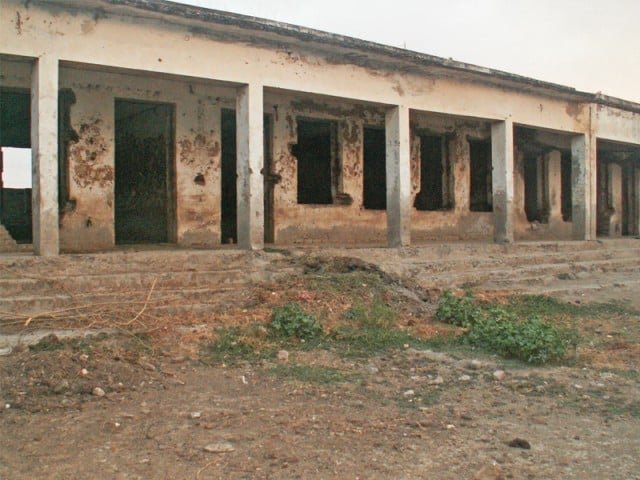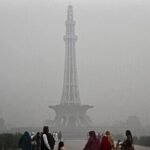Last week, as the crisp November air swept through Peshawar’s ancient university campus, a chilling announcement echoed across its storied halls: nine undergraduate departments on the brink of closure, victims of admissions that had dwindled to a whisper. I recall a late-night call from an old professor, his voice heavy with the weight of decades spent shaping young minds. Over the crackle of a poor connection, he described empty lecture theaters where once vibrant debates on Pashtun folklore and geological frontiers filled the air. “These aren’t just buildings emptying out,” he sighed, “it’s our collective memory fading.” This isn’t a fleeting mishap in one corner of Khyber Pakhtunkhwa—it’s the canary in the coal mine for Pakistan’s higher education system, a sprawling network buckling under economic strain, policy neglect, and a youth bulge that’s turning into a demographic time bomb.
At the University of Peshawar (UoP), the province’s intellectual beacon founded in 1950, the crisis has unfolded with brutal precision. For the Fall 2025 semester, BS programs in Human Development and Family Studies (a solitary applicant), Development Studies (two), Home Economics (two), Geography (three), History (three), Social Anthropology (five), Statistics (seven), Logistics and Supply Chain Analytics (two), and Geology (14, teetering just below the mandatory 15-student threshold) now face suspension. University administrators, bound by internal sustainability protocols, insist that propping up ghost classes siphons scarce resources and erodes pedagogical integrity. Yet, the plot thickens with controversy: a frantic social media post from UoP’s official handle backpedaled on “closures,” opting for the euphemism of “restructuring,” stranding faculty in a fog of uncertainty and students scrambling for alternatives. This echoes a pattern of denial amid decay—last year, similar whispers plagued departments like Philosophy and Gender Studies, which enrolled zero students despite the university’s 54 departments and 69 programs sprawling across a campus meant for thousands.
The hemorrhage extends beyond bachelor’s levels. Postgraduate admissions at UoP have cratered: PhD intakes nosedived from 178 in 2020 to a skeletal 66 in 2024-25, while MPhil numbers slipped from 661 in 2021-22 to 714 in 2023-24 before plummeting further this year. Several departments, including those in the humanities, haven’t lured a single doctoral candidate in half a decade. In a region still healing from militancy’s scars—where UoP once mapped Pashtun ethnographies and unlocked mineral veins in the Hindu Kush—these cuts aren’t mere administrative footnotes. They gut disciplines essential for cultural resilience and economic revival, like anthropology’s role in community-led peacebuilding or geology’s potential in sustainable mining amid Pakistan’s $6 trillion untapped reserves.
Peshawar’s unraveling is no outlier; it’s the starkest emblem of a national catastrophe. Pakistan’s higher education enrollment, which ballooned from a mere 2% gross rate in 2000 to 12.6% by 2018 thanks to visionary Higher Education Commission (HEC) reforms, has slammed into reverse. The Economic Survey 2024-25 lays bare the wreckage: a 13% plunge from 2.23 million students in FY2022 to 1.94 million in FY2023, with a meager 0.8% uptick projected to 1.95 million for FY2024. Public universities, the lifeline for low-income aspirants, stagger under the load: arts and humanities seats echo UoP’s fate nationwide, as youth pivot to STEM, commerce, or—desperately—emigration routes, even as international student visas for Pakistanis tanked 65% in 2024 amid global scrutiny. In Khyber Pakhtunkhwa alone, enrollment in BS, MPhil, and PhD programs across universities and affiliates dipped from 160,000 in 2022 to 155,000 in 2025.
Contrast this with neighbors: India’s gross enrollment ratio hovers at 28%, stabilized by scholarships like the Pradhan Mantri Uchchatar Shiksha Protsahan and industry-academia pacts that funneled Rs 10,000 crore into skill-linked programs last year. Bangladesh, too, clocks 18% through subsidized loans and digital outreach. In Pakistan, the chasm yawns widest in KP and Balochistan, where a 64% youth bulge collides with dilapidated hostels and labs—22% of schools lack electricity, let alone university-grade facilities—exacerbating a “leaky pipeline” where 22.8 million children never reach secondary school, and fewer still higher ed. Globally, UNESCO pegs Pakistan’s tertiary gross enrollment at under 12%, trailing South Asia’s average by 10 points, a lag that chains the nation to low-value exports and brain drain, costing $4 billion annually in lost remittances from skilled migrants.
Why this nosedive? Peel back the layers, and economics emerges as the prime culprit, a hyperinflation beast devouring aspirations. At UoP, annual BS fees have ballooned to Rs 150,000, dwarfing the Rs 14,000 at public colleges offering parallel programs—a 10-fold gulf that prices out 70% of rural households earning under Rs 30,000 monthly. Graduates in history or anthropology whisper of “teaching gigs, if you’re lucky,” while IT bootcamps dangle Rs 100,000 starting salaries. As one UoP sophomore confided in a Dawn interview, “We’re not shunning books; we’re fleeing hunger—degrees that don’t pay bills are luxuries we can’t afford.” Nationally, youth unemployment idles at 11.3%, with humanities majors twice as likely to join the 40% NEET (not in education, employment, or training) cohort.
Policy paralysis festers deeper. The HEC’s federal grants, frozen despite 30%+ inflation, have gutted budgets by 20% for 2024-25, forcing fee hikes and program slashes. Education’s GDP slice? A pathetic 0.8% in FY2025, down from 2.4% in 2018, versus the global 4.5% benchmark—provincial spends in KP and Balochistan scrape 0.5%. Overexpansion compounds the rot: KP’s 44 universities vie for the same shrinking pool, diluting demand as sub-campuses siphon locals with proximity perks. Curricula, relics of the 1990s, ignore AI ethics or climate modeling, alienating students who crave employability. Faculty shortages bite hard—UoP runs 30% understaffed, with PhD-qualified professors moonlighting for survival. Political meddling seals the deal: vice-chancellors appointed via nepotism, not merit, as seen in recent HEC tussles, eroding trust.
The fallout? Immediate: universities teeter on insolvency, with UoP’s shortfall hitting Rs 500 million last year, triggering layoffs and deferred salaries. Long-term: a hollowed innovation engine. Pakistan’s Global Innovation Index rank? 88th in 2024, with patents per million a measly 1.4 versus India’s 20. Brain drain accelerates—50,000 graduates fled in 2024, per IOM data—while societal fractures widen: unemployable humanities alumni fuel urban underclass unrest, and STEM skews innovation toward tech imports over indigenous solutions for floods or food insecurity.
Yet, amid the gloom, glimmers of reform beckon. This crisis screams for bold, multi-pronged action, starting with fiscal resuscitation. Policymakers must shatter the HEC funding freeze, pumping 15-20% more—Rs 100 billion annually—to inflation-proof grants and subsidize non-STEM fees by 50%, targeting 100,000 low-income slots via Ehsaas-linked vouchers. Emulate Punjab’s apprenticeship model: pair degrees with six-month paid internships in mining firms for geology majors or NGOs for anthropologists, boosting employability by 30% as pilots show. Nationally, revive HEC’s pre-2018 alchemy—scholarships for underrepresented regions, audited curricula infused with employer input via tripartite boards.
Universities must reinvent: UoP could hybridize anthropology with GIS analytics for heritage tourism consulting, or geology with renewables to court CPEC green investments—pilots in Lahore’s Quaid-i-Azam University yielded 25% enrollment bumps. Digital pivots are low-hanging fruit: expand ETEA’s online platforms for remote access, slashing logistics costs for Balochistan’s 40% rural cohort. Faculty incentives? HEC-mandated sabbaticals abroad and Rs 50,000 research stipends to stem the 15% annual exodus.
Professor Dr. Zakirullah Jan, UoP Teachers’ Association head, cuts to the chase: “We’ve centralized admissions into a bureaucratic black hole—devolve to departments, train staff in empathy, and watch numbers rebound.” Cross-pollinate globally: twin with India’s JNU for humanities exchanges or Turkey’s METU for STEM, as Habib University’s IDEAL initiative proves, blending design thinking to forge “socially conscious innovators.” Provincial muscle: KP’s government could levy a 1% “talent tax” on remittances for a Rs 20 billion endowment, mirroring Bangladesh’s success in doubling enrollment.
Envision Peshawar’s quads alive again—not with spectral silence, but symposia on decolonized curricula, hackathons mining tribal data for peace tech. The stakes tower: a lost generation adrift in gig-economy precarity, or a renaissance of 30% enrollment by 2030, powering a $1 trillion economy. Pakistan’s youth, 64% of us under 30, aren’t liabilities—they’re dynamite, if ignited by inclusive knowledge.
It’s not charity; it’s calculus. Let classrooms empty, and we court collapse: innovation famine, inequality infernos. Refill them with purpose—subsidized, skill-synced, sovereign—and we reclaim our future. Our professors’ pleas, our students’ dreams, the nation’s pulse: they can’t wait. The choice is ours, now.






